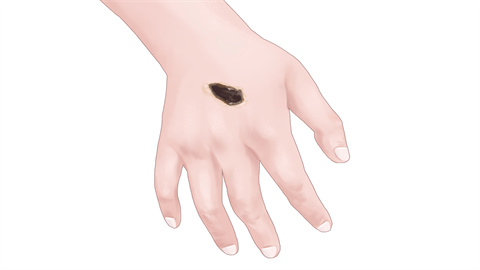How can you tell if there is pus under a scab?
To determine whether there is pus beneath a scab, one may generally observe the scab's appearance, touch the scab area, pay attention to pain sensations, examine the surrounding skin, and check whether there is any fluid oozing from the scab. If abnormalities are noticed, prompt medical attention is recommended. Detailed analysis is as follows:

1. Observe the scab's appearance: If there is pus beneath the scab, it may appear white or yellowish in color. Some areas may feel softer compared to the dry and hard condition of normally healing scabs. Abnormalities in color and texture can serve as one of the indicators.
2. Touch the scab area: Gently touch the scab and surrounding skin with your fingers. If pus is present, you may feel a fluctuant sensation beneath the scab, similar to touching a fluid-filled sac. The surrounding skin might also feel softer and warmer than other areas.
3. Pay attention to pain sensations: When pus is present beneath a scab, the pain is usually more pronounced and persistent, possibly progressing from mild tenderness to severe pain. This is distinctly different from the gradually decreasing mild discomfort experienced during normal scab healing.
4. Observe the surrounding skin: If the skin around the scab appears red, swollen, and warm to the touch, with an expanding area of redness, it may indicate the presence of pus beneath the scab. Normally healing scabs should have no significant abnormalities in the surrounding skin or only slight pinkness.
5. Check whether there is fluid oozing from the scab: If there is a discharge of pale yellow, cloudy fluid from the edges or surface of the scab, especially if it has an odor, it is highly likely that pus exists beneath. Normally healing scabs should remain dry without any discharge.
If you suspect there may be pus beneath a scab, do not pick at or remove the scab yourself, as this may worsen the infection. You may gently wipe away any discharge with a clean cotton swab to keep the area clean. If symptoms persist or worsen, seek timely medical attention to prevent the spread of infection.




